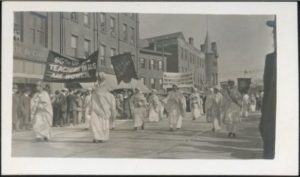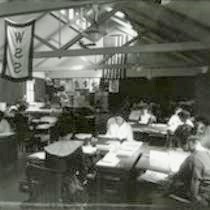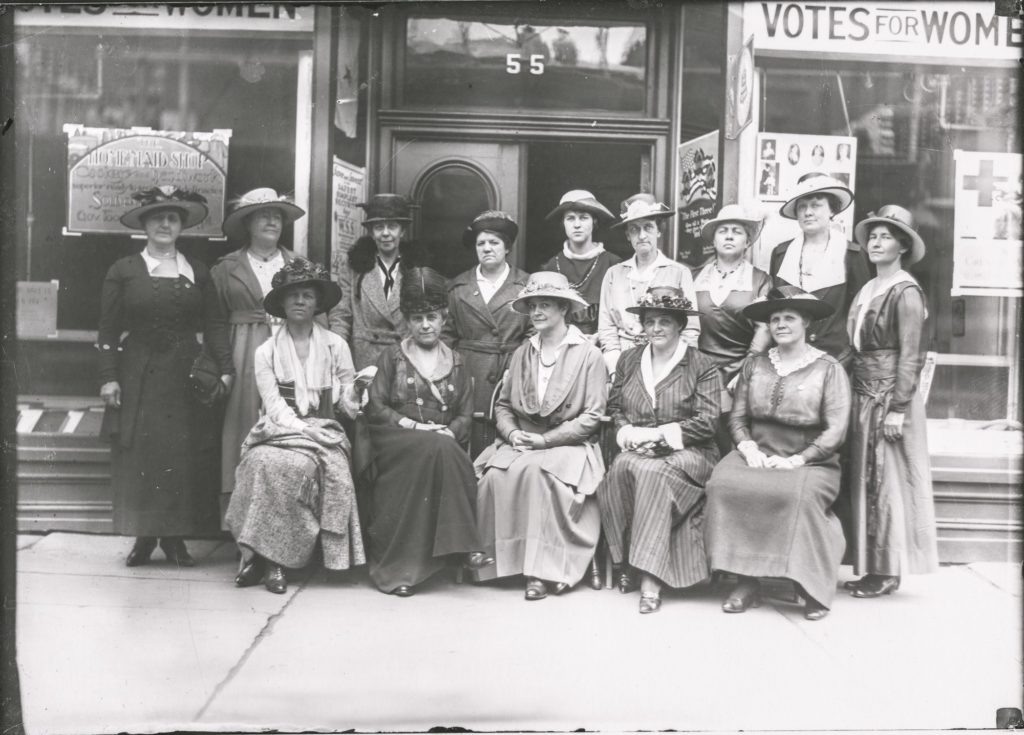By Kelly Marino
Rosamond Danielson was a respected suffragist, World War I worker, and philanthropist from Putnam Heights, Connecticut. At the turn of the twentieth century, when debate still existed about how much public influence and involvement women should have, Danielson fearlessly fought the status quo. She directed the Windham County suffrage campaign and became involved in various other causes—from home front mobilization to fundraising in support of female education. Her dedicated spirit, strong commitment to improving the lives of Connecticut’s citizens and institutions, and effective leadership skills allowed her to gain a prominent reputation as a key local activist in many cities and towns throughout the state.
Growing Up in a Wealthy Progressive Family
Rosamond was born in Providence, Rhode Island, to George Whitman and Rosa Frances Peckham Danielson on November 6, 1884. Her mother was an internationally respected portrait painter in her youth, whose work was exhibited in Paris, while her father was a self-made man—a farmer’s son turned newspaper mogul—famous for his job as editor of The Providence Journal, among many other positions. Although George died three years after marrying Rosa, his career in the publishing industry allowed the family to amass a fortune, leaving his wife, daughter, and son (Whitman) with considerable wealth.
Rosamond was sent to Bryn Mawr College. Graduating in 1905 with a degree in science (an unusual choice for a woman during the period) her focus on chemistry and geology was evidence of her progressive mindset.

Women Suffrage March, ca. 1913 – Hahn Family photo album. 2009.382.0 – Connecticut Historical Society
Becoming a Notable Local Suffrage Leader
Danielson became active in the women’s suffrage movement in Connecticut during the early twentieth century. She held a variety of positions in local and state suffrage bodies, including secretary of the Putnam Equal Franchise League and Windham County’s chairman of the Connecticut Woman Suffrage Association (CWSA). Through these organizations, she gave speeches, helped organize conferences and conventions, arranged citizenship education programs, marched in parades, participated in automobile tours, and petitioned the legislature. She also contributed to suffrage activism in other states, particularly in Worcester County, Massachusetts, and in New York.
Danielson’s Putnam Heights home was the site of many state and local suffrage events. Under her direction, the campaign in Windham County took off, with representatives from the area attending every state suffrage convention and delegations contributing to other state and regional activism.
War Work and Philanthropy

Connecticut State Council of Defense during World War I – Connecticut State Library, Dudley Photograph Collection, Connecticut History Illustrated
At the same time that she was promoting women’s suffrage, Danielson was also participating in other areas of activism; particularly, women’s collective organization to support American efforts during World War I. Like many CWSA campaigners, she was eager to portray suffragists in a respectable light. Danielson served on the Connecticut State Council of Defense’s committee for women’s activities, which helped with rationing, food conservation, and Red Cross work. She was also director of the woman’s board for the Day Kimball hospital in Putnam, a group she remained active in later in life.
In addition, Danielson staunchly supported women’s education. While campaigning for suffrage, she held positions in the Windham House Association (WHA) to fundraise for Connecticut College and assisted with the school’s arboretum (because of her love for horticulture, plants, and gardening). With the WHA, she generated money for a new dormitory on campus named “Windham Hall.” By 1921, the group had raised over $18,000. Danielson further participated in fundraising to build the endowment of her alma mater, Bryn Mawr.
After 1920, Danielson continued to be active within her community, serving on local and state committees. Once women won the right to vote that year, she was elected as president of the Putnam Civic Club—which continued to educate and register Connecticut’s voters—and served as a member of the Putnam Republican Town Committee. She joined the women’s section of the state’s Fair Price Committee to decrease the cost of essential goods, was active in the Connecticut Historical Society, and contributed as a Sunday school teacher in Putnam and a member of the Congregational church. During World War II, Danielson served in Connecticut as an air raid warden, the assistant chief observer of the Aircraft Warning Service, a registrar for the Red Cross Blood Bank, and a volunteer for hospital work. After a long and full life, she died on April 12, 1971, at 96 years old.
Kelly Marino is an Assistant Lecturer of History at Sacred Heart University.









